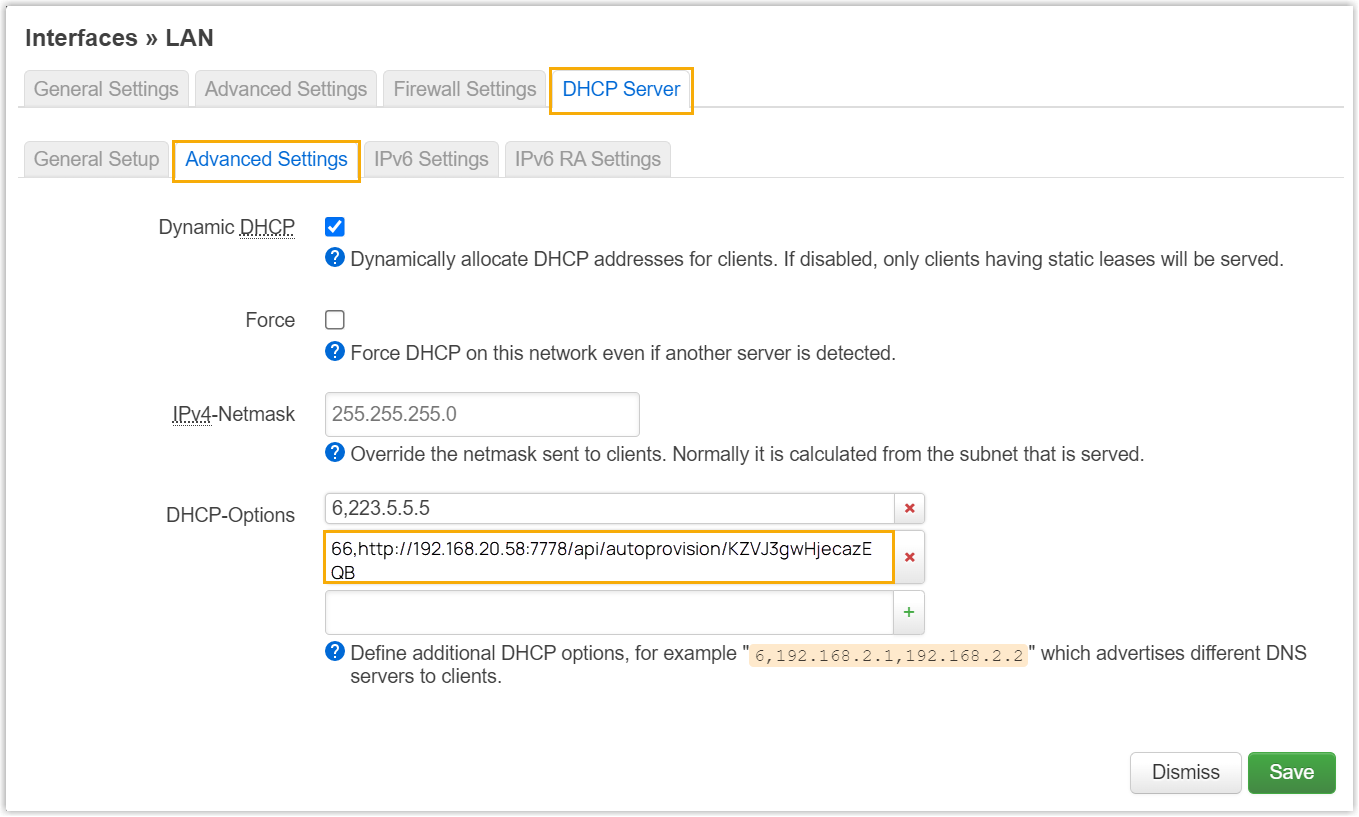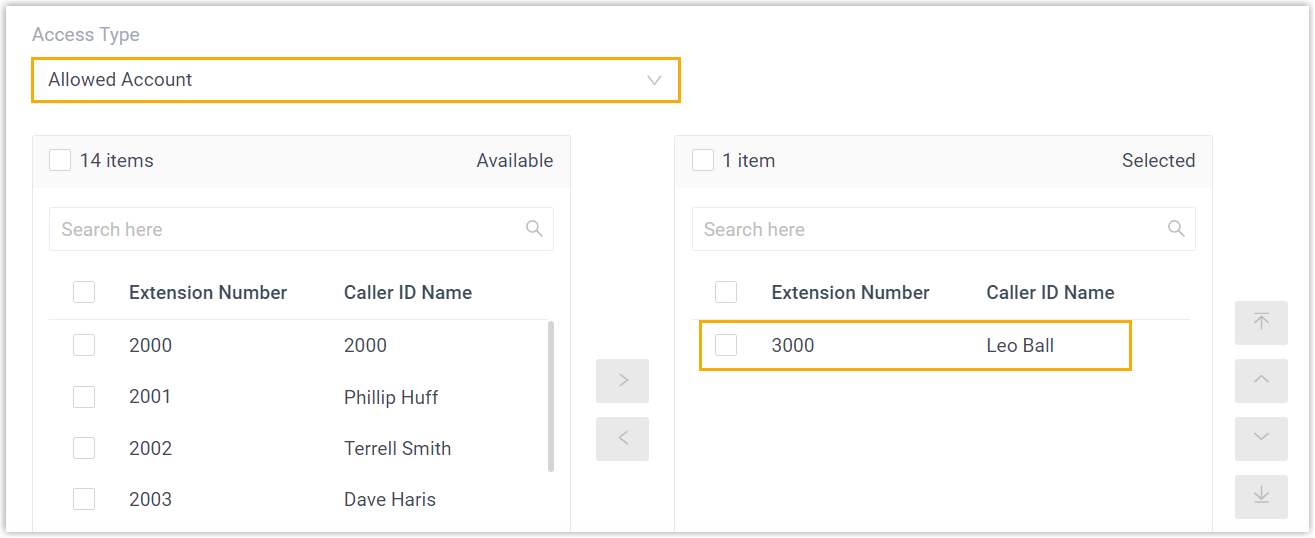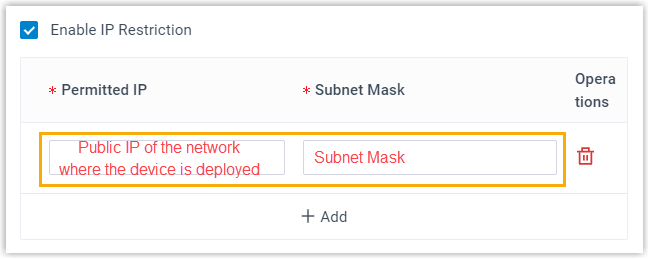Auto Provision Gigaset DECT System with Yeastar P-Series PBX System
A DECT system consists of two parts, DECT base station and DECT handsets (namely DECT phones). This topic describes how to provision the Gigaset DECT base station with Yeastar P-Series PBX System, so that the Gigaset DECT handsets can be connected to the PBX via the base station, allowing users to utilize the handsets as PBX extensions to make and receive calls.
Requirements
| Base station | Version Requirement | PBX Requirement | Supported Auto Provisioning Method |
|---|---|---|---|
| N870 IP PRO | 2.38.1 or later |
37.3.0.42 or later |
|
| N670 IP PRO | 2.38.1 or later |
37.3.0.42 or later |
|
| N610 IP PRO | 2.52.0 or later |
37.3.0.42 or later |
|
The device model and firmware version of the Gigaset DECT system used in this example are shown in the table below.
| Device Model | Firmware Version |
|---|---|
| Gigaset DECT base station | |
| N870 IP PRO | v2.38.1 |
| Gigaset DECT handset | |
| S650H PRO | v114.074.04 |
| SL750H PRO | v116.074.04 |
Scenarios
The provisioning method and operations vary depending on the network environment of Gigaset DECT system and Yeastar PBX, as the following table shows.
| Scenario | Description |
|---|---|
| DECT system and PBX are in the SAME subnet (LAN) | In this scenario, you can provision the Gigaset DECT system
with Yeastar PBX via PnP method. For more information, see Auto provision Gigaset DECT system in the same subnet (PnP). |
| DECT system and PBX are in DIFFERENT subnets (LAN) | In this scenario, you can provision the Gigaset DECT system
with Yeastar PBX via DHCP method. For more information, see Auto provision Gigaset DECT system in different subnets (DHCP). |
| DECT system and PBX are in DIFFERENT networks | In this scenario, you can provision the Gigaset DECT system
with Yeastar PBX via RPS method. For more information, see Auto provision Gigaset DECT system in remote network (RPS). |
Auto provision Gigaset DECT system in the same subnet (PnP)
In this example, the Gigaset DECT system (base station and handset) and the Yeastar
PBX (IP: 192.168.28.39) are deployed in same subnet
(192.168.28.0/24), where the DECT base station obtains its IP address via DHCP.

- Prerequisites
-
- Make sure that there is only one DHCP server running in the subnet, or the DECT base station would fail to obtain an IP address.
- Make sure that you have downloaded the template for the desired phone model (Path: ).
- Procedure
- Step 1. Enable dynamic IP setting for Gigaset DECT base station
- On the DECT base station, use the device button to change
the device role, so that the base station can obtain an IP address from a
DHCP server in the subnet.
- Press and hold the device button for at least 10 seconds
until both LEDs turn off, then release the button.
The device is now in programming mode.
- Short press the device button until both LEDs become
blue, then release the button.
The device role is switched to Integrator/DECT Manager with dynamic IP setting enabled.
- Press and hold the device button until both LEDs turn
red, then release the button.
The base station is reset, and it takes several minutes for the device to boot up with the selected device role; After booted up, the device gets an IP address from the DHCP server.
- Press and hold the device button for at least 10 seconds
until both LEDs turn off, then release the button.
- Step 2. Configure Gigaset DECT base station on PBX
- On PBX web portal, configure the provisioning settings for the DECT base
station, and assign extensions to the DECT handsets.
- Log in to PBX web portal, go to .
The DECT base station detected by the PBX via PnP is displayed in the phone list.
- Click
 to edit the DECT base station.
to edit the DECT base station.
- In the Assign Extension
section, assign extensions for the DECT handsets according to your
needs.
- To assign extensions one by one, do as follows:

- In the Handset Mode drop-down
list, select the mode via which you want to
associate the handsets.
- Fixed Number Mode: Associate the handset with a specific extension number.
- IPUI Mode: Associate the handset using its unique IPUI codes.
- Select the checkbox of the desired handset.
- In the Extension drop-down list, select the desired extension.
- If you use IPUI mode, enter the IPUI code of the handset in the IPUI field.
- In the Handset Mode drop-down
list, select the mode via which you want to
associate the handsets.
- To assign extensions in bulk, do as follows:

- In the Start Extension and End Extension drop-down lists, set the extension range.
- In the Handset Mode drop-down
list, select the mode via which you want to
associate the handsets.
- Fixed Number Mode: Associate the handsets with specific extension numbers.
- IPUI Mode: Associate the handsets using their unique IPUI codes.
- Click Assign
Extension.
Handsets are automatically enabled and assigned with the specified extensions in sequence.
- If you use IPUI mode, enter the IPUI codes of the handsets in the IPUI field.
Note: If your desired extension is not listed in the drop-down list, it indicates that the extension has been associated with an IP phone or gateway.- To release the extension from the associated IP phone or gateway, see Release an Extension from a Provisioned IP Phone/Gateway.
- To assign the extension to the phone without releasing it from the previously associated device, you can configure the concurrent registration setting for the extension, as the PBX only allows an extension to register with one SIP endpoint by default.
- To assign extensions one by one, do as follows:
-
Optional: Configure other settings according to your needs.
- Click Save.
- In the phone list, click
 beside the Gigaset DECT base
station to reprovision the
device.
beside the Gigaset DECT base
station to reprovision the
device. The DECT base station automatically downloads the configurations from the PBX and applies the settings.Tip: You can click
The DECT base station automatically downloads the configurations from the PBX and applies the settings.Tip: You can click in front of the DECT
base station to see the extensions assigned to the DECT
handsets.
in front of the DECT
base station to see the extensions assigned to the DECT
handsets.
- Log in to PBX web portal, go to .
- Step 3. Register the Gigaset DECT handsets to DECT base station
-
Enable the registration mode of DECT base station and confirm the registration on DECT handsets, so that the Gigaset DECT handsets can be registered to the DECT base station.
- Log in to the web interface of DECT base
station.

- In the browser's address bar, enter the IP address of the base station.
- Enter the username
adminand the default passwordadmin. - Click Login.
- Change the default password, select a radio frequency
band, then click Set.Note: For the DECT radio band, select the radio frequency band used in your region.

You are redirected to the web interface of the DECT base station.
- Under the SETTINGS tab, go to , click
 to edit a handset with an extension
assigned.
to edit a handset with an extension
assigned.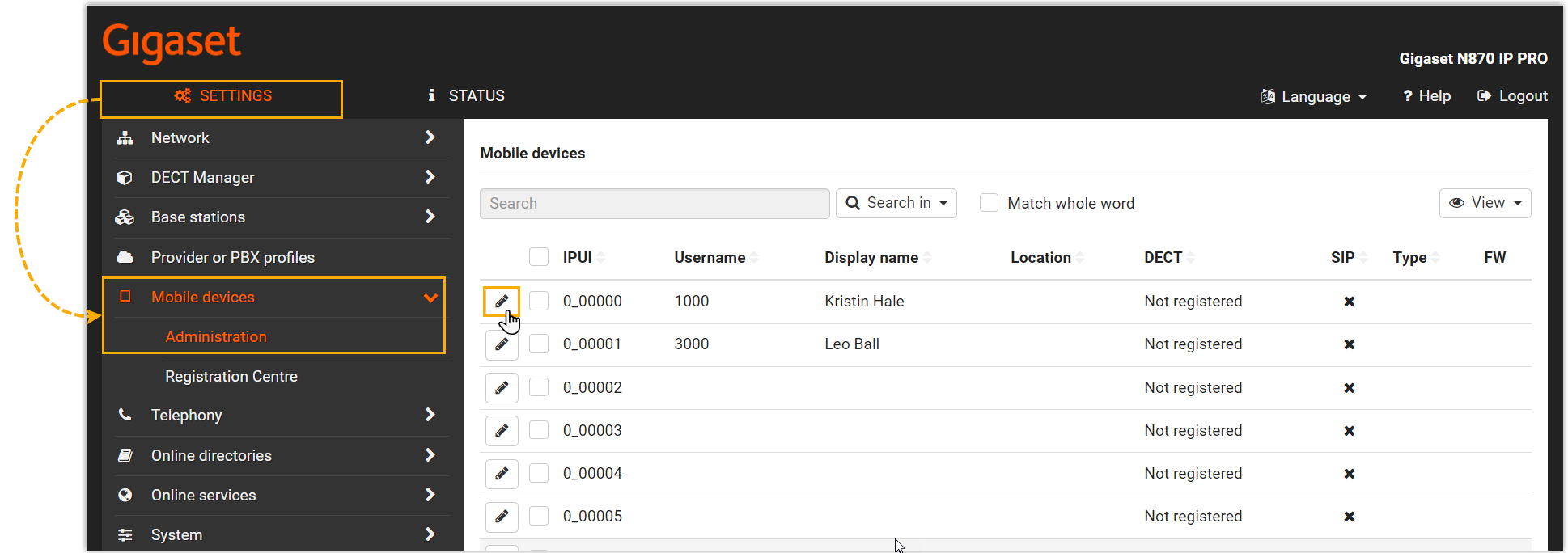
- In the RegStatus
drop-down list, select To
register.
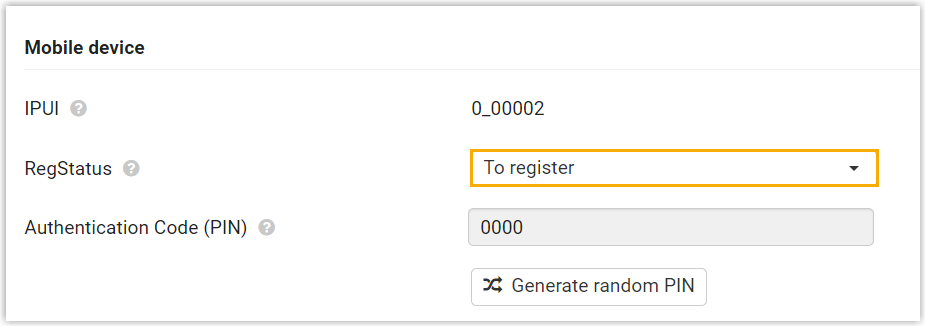
- In the Authentication Code
(PIN) field, set and note down a PIN code,
which will be used on handset later for registration.
In this example, use the default PIN code
0000.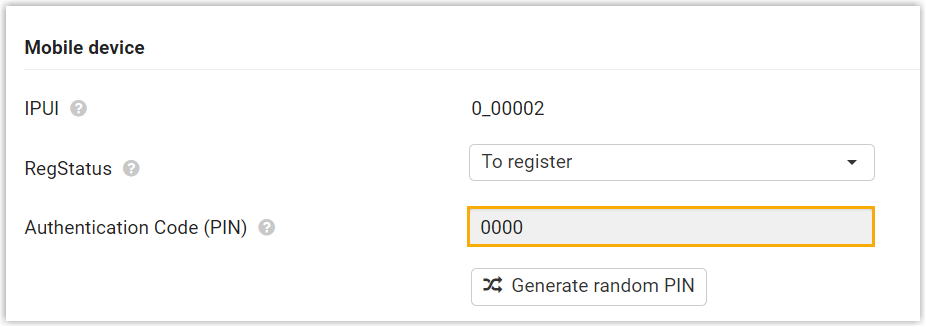
- Scroll down to the bottom, click
Register now.

- In the RegStatus
drop-down list, select To
register.
- Repeat the above steps to edit other handsets with extensions assigned until all the handsets are in To register status.
- Go to , complete the following settings.
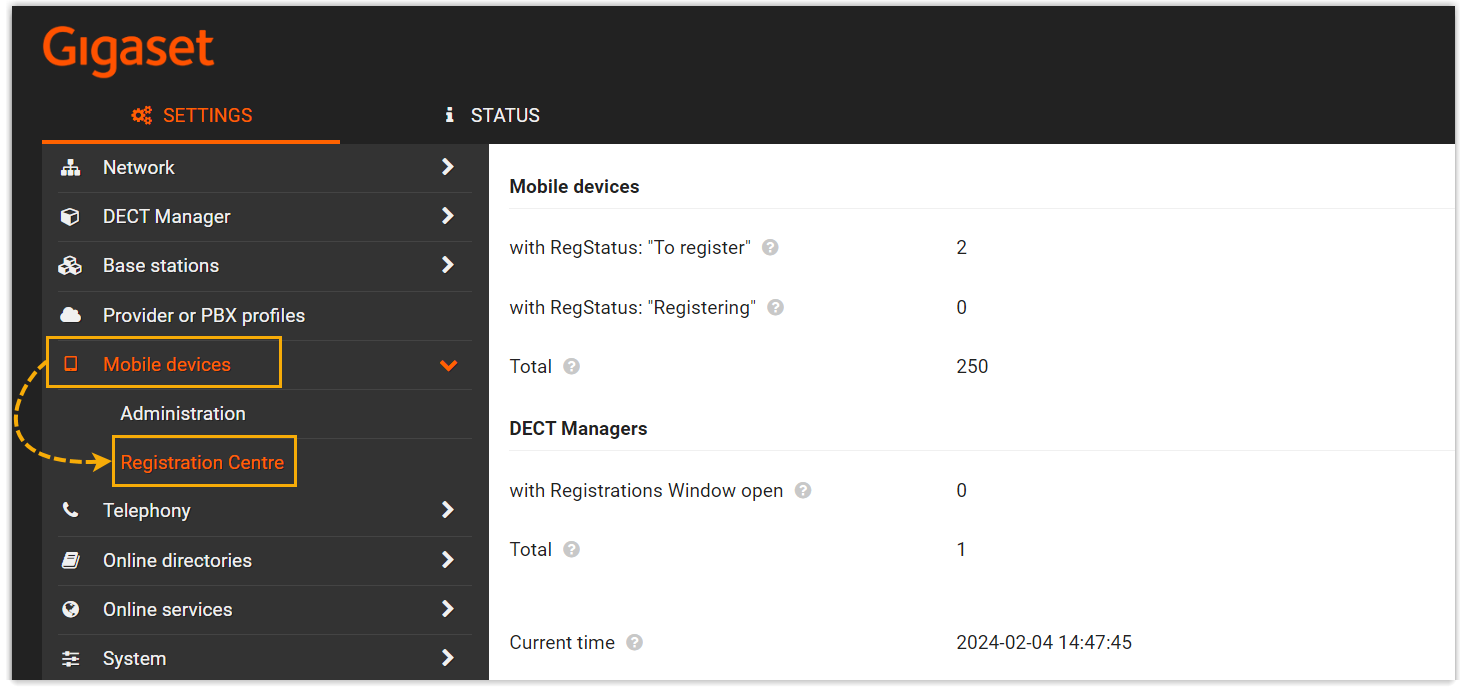
- In the Registration duration section,
set how long the DECT base station should stay in
registration mode.
In this example, keep the default value (3 minutes).

- In the Registration start time
section, enable the registration mode of DECT base
station.
- To start registration right now, click
Start now.

- To schedule a time to start registration, set a time
in the time field, then click
Set at the bottom of the
page.

In this example, click Start now.
The with Registrations Window open field displays 1, indicating that the DECT base station is in registration mode at the given time duration.

- To start registration right now, click
Start now.
- In the Registration duration section,
set how long the DECT base station should stay in
registration mode.
- Confirm registration on DECT handsets.
- On the handset, go to .
The DECT handset starts to search for a base station that is in registration mode. When it finds the base station, there is a prompt asking you to enter a system PIN.
- Enter the PIN code obtained from the DECT base station, and press OK.
- On the handset, go to .
- Log in to the web interface of DECT base
station.
- Result
-
- The handsets are successfully registered to the DECT base station,
and associated with the assigned PBX extensions via the base
station.
- On the web interface of DECT base
station, you can check the registration status of the
handsets on .

-
On PBX web portal, you can check the registration status of the extensions on .

- On the web interface of DECT base
station, you can check the registration status of the
handsets on .
- The registered DECT handsets can be used as extensions to make and receive calls.
- The handsets are successfully registered to the DECT base station,
and associated with the assigned PBX extensions via the base
station.
Auto provision Gigaset DECT system in different subnets (DHCP)
In this example, the DECT system (base station and handset) and a DHCP server are
deployed in subnet 28, while the Yeastar PBX (IP: 192.168.20.58) is
deployed in subnet 20.
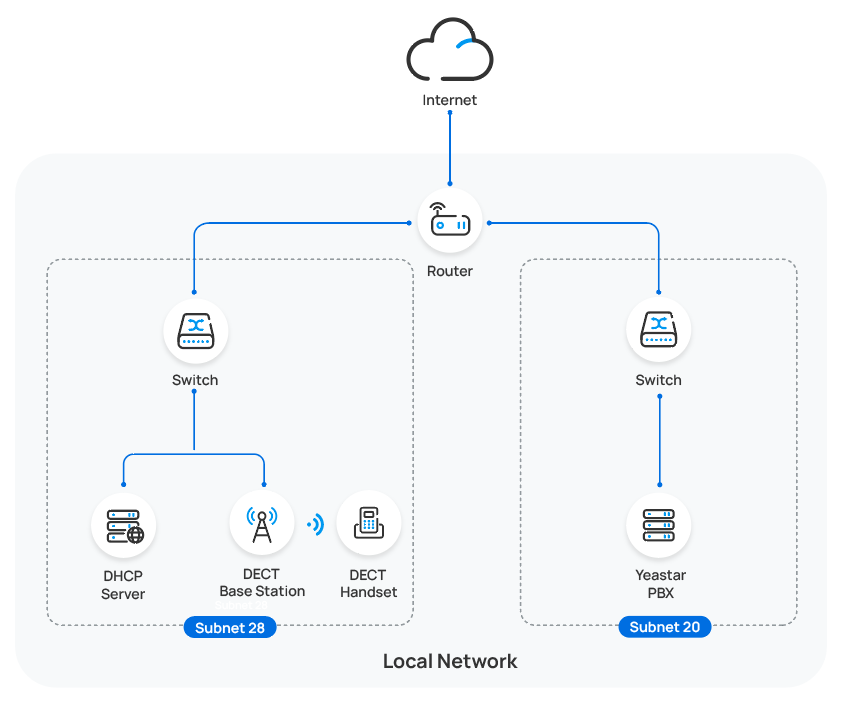
- Prerequisites
-
- Make sure that there is only one DHCP server running in the subnet where the DECT system is deployed, or the base station would fail to obtain an IP address.
- Make sure that the DECT system and PBX can communicate with each other over the subnets.
- Make sure that you have downloaded the template for the desired phone model (Path: ).
- Gather information of the DECT base station, including Vendor, Model, and MAC address.
- Procedure
- Step 1. Enable Remote Registration feature for extensions on PBX
- Enable the Remote Registration feature for the extension to be assigned to
DECT handsets, so that the extension can be registered in a different subnet.
- Log in to PBX web portal, go to , edit the desired extension.
- Click Security tab, select the checkbox of
Allow Remote
Registration
in the SIP Security section.

- Click Save and Apply.
- Step 2. Add the Gigaset DECT base station on PBX
- Add the DECT base station on PBX. The PBX will generate a configuration file
based on the device's MAC address.
- On PBX web portal, go to .
- Click .
- In the IP Phone section, enter
the following information.

- Vendor: Select Gigaset.
- Model: Select the device model. In this example, select Gigaset N870 IP PRO.
- MAC Address: Enter the MAC address of the DECT base station.
- In the Options section, configure the
following settings.

- Template: Select a desired template
from the drop-down list.Note: You can select the default template corresponding to the phone model, or customize your own template. For more information, see Create a Custom Auto Provisioning Template.
- Provisioning Method: Select
DHCP (In the Office).
A provisioning link is automatically generated and displayed in the Provisioning Link field. This provisioning link points to the location where the phone's configuration file is stored.
- Template: Select a desired template
from the drop-down list.
- In the Assign Extension
section, assign extensions for the DECT handsets according to your
needs.
- To assign extensions one by one, do as follows:

- In the Handset Mode drop-down
list, select the mode via which you want to
associate the handsets.
- Fixed Number Mode: Associate the handset with a specific extension number.
- IPUI Mode: Associate the handset using its unique IPUI codes.
- Select the checkbox of the desired handset.
- In the Extension drop-down list, select the desired extension.
- If you use IPUI mode, enter the IPUI code of the handset in the IPUI field.
- In the Handset Mode drop-down
list, select the mode via which you want to
associate the handsets.
- To assign extensions in bulk, do as follows:

- In the Start Extension and End Extension drop-down lists, set the extension range.
- In the Handset Mode drop-down
list, select the mode via which you want to
associate the handsets.
- Fixed Number Mode: Associate the handsets with specific extension numbers.
- IPUI Mode: Associate the handsets using their unique IPUI codes.
- Click Assign
Extension.
Handsets are automatically enabled and assigned with the specified extensions in sequence.
- If you use IPUI mode, enter the IPUI codes of the handsets in the IPUI field.
Note: If your desired extension is not listed in the drop-down list, it indicates that the extension has been associated with an IP phone or gateway.- To release the extension from the associated IP phone or gateway, see Release an Extension from a Provisioned IP Phone/Gateway.
- To assign the extension to the phone without releasing it from the previously associated device, you can configure the concurrent registration setting for the extension, as the PBX only allows an extension to register with one SIP endpoint by default.
- To assign extensions one by one, do as follows:
- Click Save.The DECT base station is added to the PBX, and displayed in the Auto Provisioning phone list.Tip: You can click
 in front of the DECT base
station to see the extensions assigned to the DECT
handsets.
in front of the DECT base
station to see the extensions assigned to the DECT
handsets.
- Step 3. Configure DHCP option 66 on DHCP server
- Use the generated provisioning link to configure option 66 on the DHCP server in the subnet where the DECT system is deployed.
- Step 4. Enable dynamic IP setting for Gigaset DECT base station
- On the DECT base station, use the device button to change the
device role, so that the base station can obtain an IP address from a DHCP
server in the subnet.
- Press and hold the device button for at least 10 seconds
until both LEDs turn off, then release the button.
The device is now in programming mode.
- Short press the device button until both LEDs become
blue, then release the button.
The device role is switched to Integrator/DECT Manager with dynamic IP setting enabled.
- Press and hold the device button until both LEDs turn read, then
release the button.
The base station is reset, and it takes several minutes for the device to boot up with the selected device role; After booted up, the device gets an IP address from the DHCP server, and automatically downloads configurations from the PBX.
- Press and hold the device button for at least 10 seconds
until both LEDs turn off, then release the button.
- Step 5. Register the Gigaset DECT handsets to DECT base station
-
Enable the registration mode of DECT base station and confirm the registration on DECT handsets, so that the Gigaset DECT handsets can be registered to the DECT base station.
- Result
-
- The handsets are successfully registered to the DECT base station,
and associated with the assigned PBX extensions via the base
station.
- On the web interface of DECT base
station, you can check the registration status of the
handsets on .

- On PBX web portal, you can check the registration status of
the extensions on .

- On the web interface of DECT base
station, you can check the registration status of the
handsets on .
- The registered DECT handsets can be used as extensions to make and receive calls.
- The handsets are successfully registered to the DECT base station,
and associated with the assigned PBX extensions via the base
station.
Auto provision Gigaset DECT system in remote network (RPS)
In this example, the Gigaset DECT system (base station and handset) and a DHCP server are deployed in Network A, and the Yeastar PBX is deployed in Network B.

- Prerequisites
- Yeastar P-Series PBX System supports to auto provision Gigaset DECT system remotely either using Yeastar FQDN or using Public IP address / external host / Yeastar domain name. According to the provisioning method you intend to use, make sure that you have completed the corresponding setup shown below.
- Procedure
- Step 1. Add the Gigaset DECT base station on PBX
- Add the DECT base station on PBX. The PBX will generate a configuration file
based on the device's MAC address.
- On PBX web portal, go to .
- Click .
- In the IP Phone section, enter
the following information.

- Vendor: Select Gigaset.
- Model: Select the device model. In this example, select Gigaset N870 IP PRO.
- MAC Address: Enter the MAC address of the DECT base station.
- In the Options section, configure the
following settings.
Figure 1. RPS using Yeastar FQDN 
Figure 2. RPS using Public IP Address / External Host domain name 
- Template: Select a
desired template from the drop-down list.Note: You can select the default template corresponding to the phone model, or customize your own template. For more information, see Create a Custom Auto Provisioning Template.
- Provisioning Method:
Select RPS FQDN (Remote) or
RPS (Remote) according to your
need.
A provisioning link is automatically generated and displayed in the Provisioning Link field. This provisioning link points to the location where the phone's configuration file is stored.
- Template: Select a
desired template from the drop-down list.
- In the Assign Extension
section, assign extensions for the DECT handsets according to your
needs.
- To assign extensions one by one, do as follows:

- In the Handset Mode drop-down
list, select the mode via which you want to
associate the handsets.
- Fixed Number Mode: Associate the handset with a specific extension number.
- IPUI Mode: Associate the handset using its unique IPUI codes.
- Select the checkbox of the desired handset.
- In the Extension drop-down list, select the desired extension.
- If you use IPUI mode, enter the IPUI code of the handset in the IPUI field.
- In the Handset Mode drop-down
list, select the mode via which you want to
associate the handsets.
- To assign extensions in bulk, do as follows:

- In the Start Extension and End Extension drop-down lists, set the extension range.
- In the Handset Mode drop-down
list, select the mode via which you want to
associate the handsets.
- Fixed Number Mode: Associate the handsets with specific extension numbers.
- IPUI Mode: Associate the handsets using their unique IPUI codes.
- Click Assign
Extension.
Handsets are automatically enabled and assigned with the specified extensions in sequence.
- If you use IPUI mode, enter the IPUI codes of the handsets in the IPUI field.
Note: If your desired extension is not listed in the drop-down list, it indicates that the extension has been associated with an IP phone or gateway.- To release the extension from the associated IP phone or gateway, see Release an Extension from a Provisioned IP Phone/Gateway.
- To assign the extension to the phone without releasing it from the previously associated device, you can configure the concurrent registration setting for the extension, as the PBX only allows an extension to register with one SIP endpoint by default.
- To assign extensions one by one, do as follows:
- Click Save.
The DECT base station is added to the PBX, and displayed in the Auto Provisioning phone list; The PBX will send an event notification of RPS Request Success.
Tip: You can click in front of the DECT base
station to see the extensions assigned to the DECT
handsets.
in front of the DECT base
station to see the extensions assigned to the DECT
handsets.
- Step 2. Enable dynamic IP setting for Gigaset DECT base station
- On the DECT base station, use the device button to change the
device role, so that the base station can obtain an IP address from a DHCP
server in the subnet.
- Press and hold the device button for at least 10 seconds
until both LEDs turn off, then release the button.
The device is now in programming mode.
- Short press the device button until both LEDs become
blue, then release the button.
The device role is switched to Integrator/DECT Manager with dynamic IP setting enabled.
- Press and hold the device button until both LEDs turn read, then
release the button.
The base station is reset, and it takes several minutes for the device to boot up with the selected device role; After booted up, the device gets an IP address from the DHCP server, and automatically downloads configurations from the PBX.
- Press and hold the device button for at least 10 seconds
until both LEDs turn off, then release the button.
- Step 3. Register the Gigaset DECT handsets to DECT base station
-
Enable the registration mode of DECT base station and confirm the registration on DECT handsets, so that the Gigaset DECT handsets can be registered to the DECT base station.
- Result
-
- The handsets are successfully registered to the DECT base station,
and associated with the assigned PBX extensions via the base
station.
- On the web interface of DECT base
station, you can check the registration status of the
handsets on .

- On PBX web portal, you can check the registration status of
the extensions on .

- On the web interface of DECT base
station, you can check the registration status of the
handsets on .
- The registered DECT handsets can be used as extensions to make and receive calls.
- The handsets are successfully registered to the DECT base station,
and associated with the assigned PBX extensions via the base
station.

